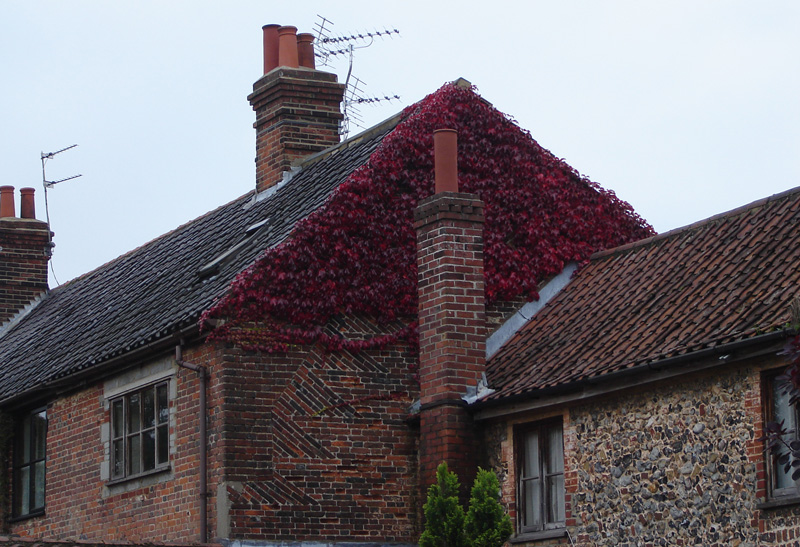Well, that’s enough policy-wonking for now. I said my ‘thatch-fest’ a couple of weeks ago could be a segue into some stuff on ‘stuff’– or ‘what we make buildings out of’. I took this picture (below) while I was researching my Norfolk vernacular/character tour for a client last summer, and used it as a summary-image for a section on traditional building materials.
Until the Industrial Revolution, most buildings were made from what could be chiselled, scraped or grown out of the land on which they stood. Most of Norfolk is a high(ish!) gently undulating clay plateau, so it is not surprising that most ‘low-road’ buildings in the county are made of clay – soft Norfolk Red bricks for the walls, and the distinctive Norfolk pan-tile on the roof. Brick was originally a luxury material, and only replaced timber-framing as the basic building material for most houses during the C18th, as cheaper mass-produced brick became available. Around this time many earlier timber-framed buildings were re-faced in brick, sometimes just as a status symbol (like the house we met in an earlier post) and sometimes at ground floor only, beneath a first floor jetty, perhaps to protect relatively fragile wattle and daub.
The picture is of a pair of houses in Old Costessy (pronounced ‘Cossey’) in the Yare valley west of Norwich, one brick-built (or faced) the other in flint and brick-rubble. The flint house has natural red pan-tiles, the brick building has black-glazed tiles, which are also quite common. It’s often hard to tell whether an older house is brick-built rather than just clad in brick, but what is clear in this picture is that the brick house was originally thatched. Thatch needs to be quite steeply pitched – 50 degrees or more – but the pan-tiles with which it was often eventually replaced could be laid at a pitch as low as 35 degrees. When replacing thatch with pan-tiles it was quite common to reduce the pitch of the roof by building up the front wall and gable of the house, gaining some extra headroom in the attic. That’s what has happened here; the original line of the gable can be seen clearly in the photo.
Of course many thatched roofs were recovered in pan-tile without any change in pitch, and many roofs built for a pan-tile covering are still fairly steep, partly explaining why ‘roofs across fields’ are such a feature of Norfolk’s rural landscape.
More on Norfolk ‘stuff’ here.
Coming soon: Matthew Rice’s ‘Building Norfolk’; thoughts on ‘local distinctiveness’; Norfolk and Cork ‘design-guides’; London-centric design competitions.

